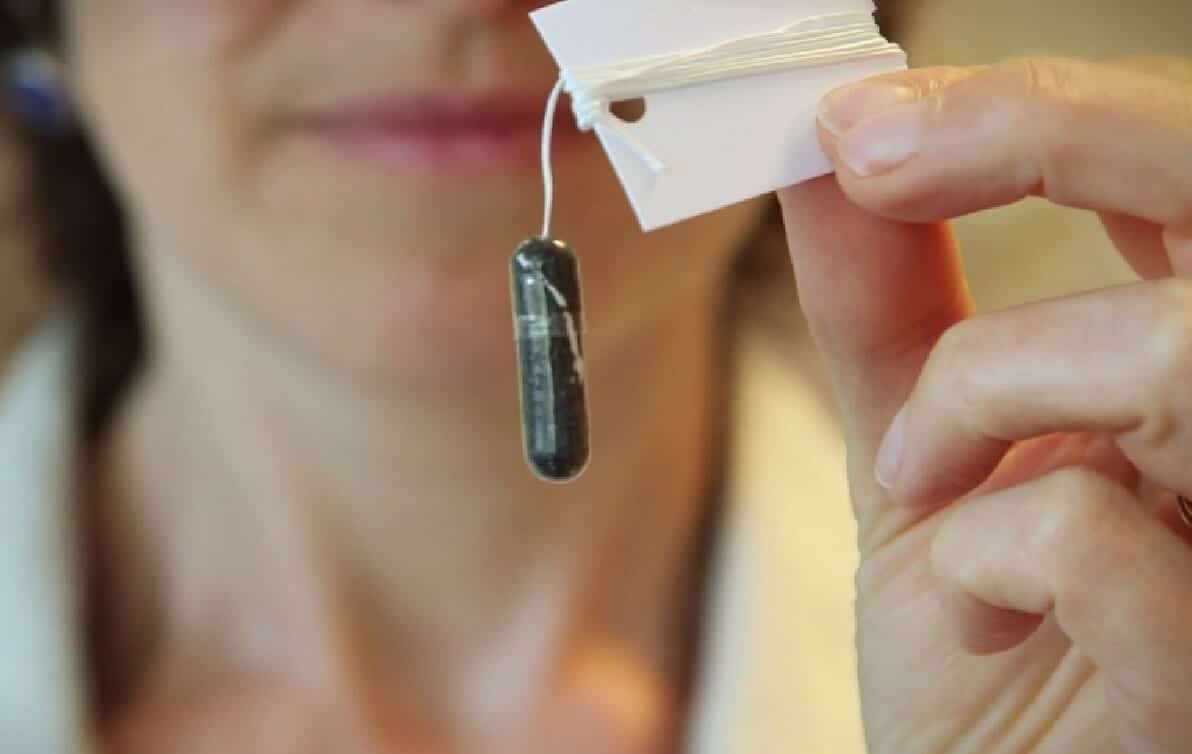An innovative cancer-detection device that has a patient swallow a sponge-containing pill is more effective than a traditional biopsy in finding cancer.
To assess whether a patient has esophageal cancer, which affects the tube connecting a person’s mouth and stomach, researchers from the University of Cambridge developed a unique “pill-on-a-string” that can rub the esophagus and scrape away cells that scientists can then examine for cancer.
Typically, esophageal cancer is diagnosed through a biopsy, but biopsies are often prone to difficult analysis and subjective interpretation, note the researchers.

The new method, which involves a patient swallowing a pill that then dissolves into a “Cytosponge” that gathers cells when pulled back up the patient’s throat, gathers a wider range of cells for analysis than traditional biopsies. That means physicians have a better chance of identifying potentially harmful cancer cells.
Due to the nature of esophageal cancer, biopsies can often miss important cell mutations that show whether cancer has developed or appears to be developing. Most cases of esophageal cancer start out with a condition known as Barrett’s esophagus, during which the lining of the esophagus changes form.
“The trouble with Barrett’s esophagus is that it looks bland and might span over 10 [centimeters],” said Rebecca Fitzgerald with the Medical Research Council Cancer Unit at the University of Cambridge.
Related: New Chewing Gum May Detect Cancer
The Cytosponge technique, however, gathers cells from a wider area to aid detection.
“We created a map of mutations in a patient with the condition and found that within this stretch, there is a great deal of variation amongst cells. Some might carry an important mutation, but many will not,” explained Fitzgerald.
“If you’re taking a biopsy, this relies on your hitting the right spot. Using the Cytosponge appears to remove some of this game of chance,” she added.
In Barrett’s esophagus, cellular changes occur over time when stomach acid refluxes through the esophagus. About 20 percent of those with Barrett’s esophagus go on to develop esophageal cancer, note the study authors
In people with Barrett’s esophagus, somewhere in the range of 12,000 mutations are present in their esophageal cells, note the researchers. That compares to an average of about 18,000 mutations that are present when cancer develops. However, many of the thousands of mutations present in Barrett’s esophagus are not considered to be linked to cancer, which makes close analysis all the more important as a way to separate harmful from non-harmful cell mutations.
Related: New Blood Test Aims to Detect Cancer Sooner Than Ever
Based on the evidence of their study, the researchers speculate that a “tipping point” occurs when the mutations change from benign to cancer-causing.
“We know very little about how you go from pre-cancer to cancer – and this is particularly the case in esophageal cancer,” said co-author Dr. Caryn Ross-Innes. “Barrett’s esophagus and the cancer share many mutations, but we are now a step closer to understanding which are the important mutations that tip the condition over into a potentially deadly form of cancer.”
The study appeared in the journal Nature Genetics.
Richard Scott is a health care reporter focusing on health policy and public health. Richard keeps tabs on national health trends from his Philadelphia location and is an active member of the Association of Health Care Journalists.


![How To: ‘Fix’ Crepey Skin [Watch]](https://cdn.vitalupdates.com/wp-content/uploads/2017/05/bhmdad.png)












